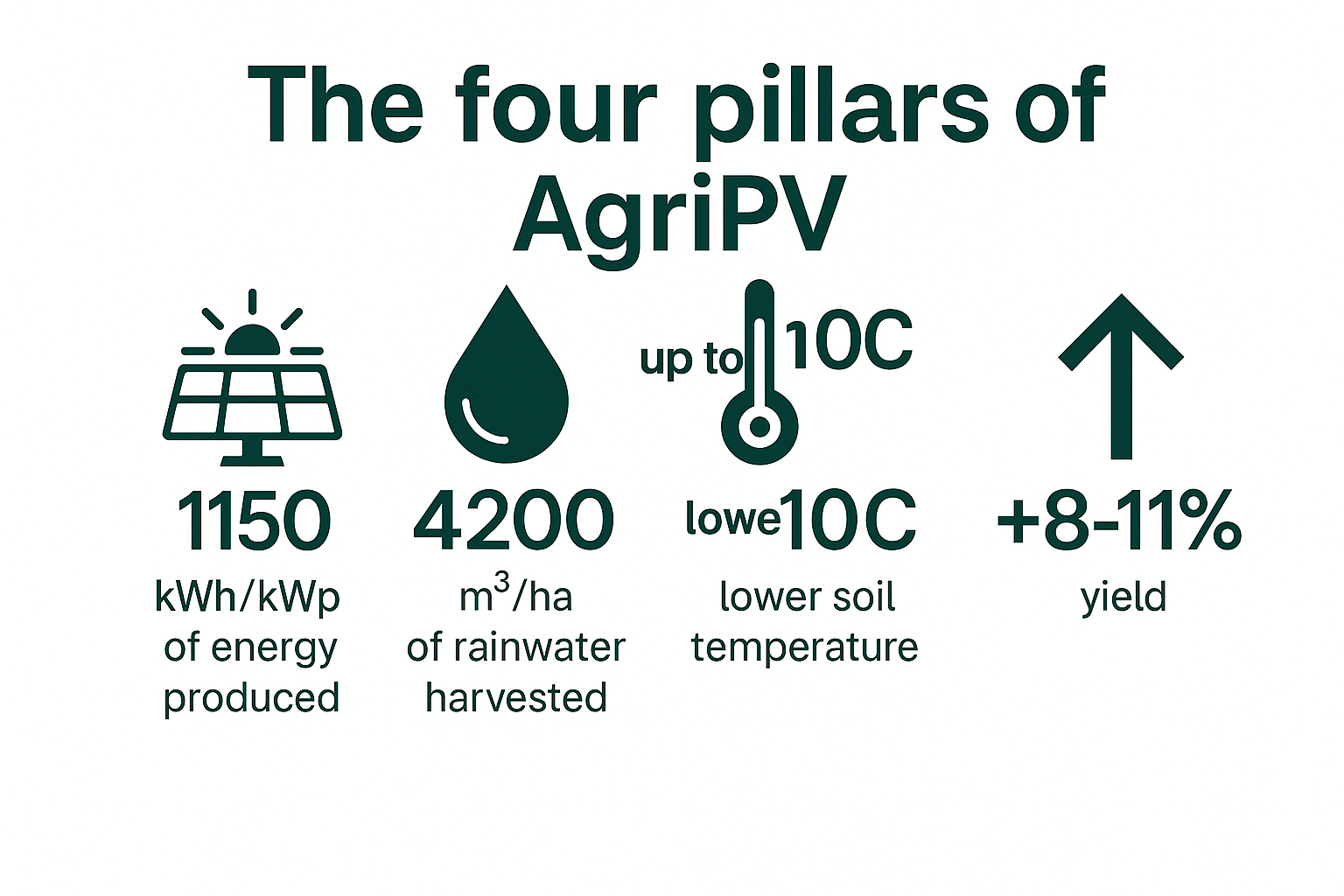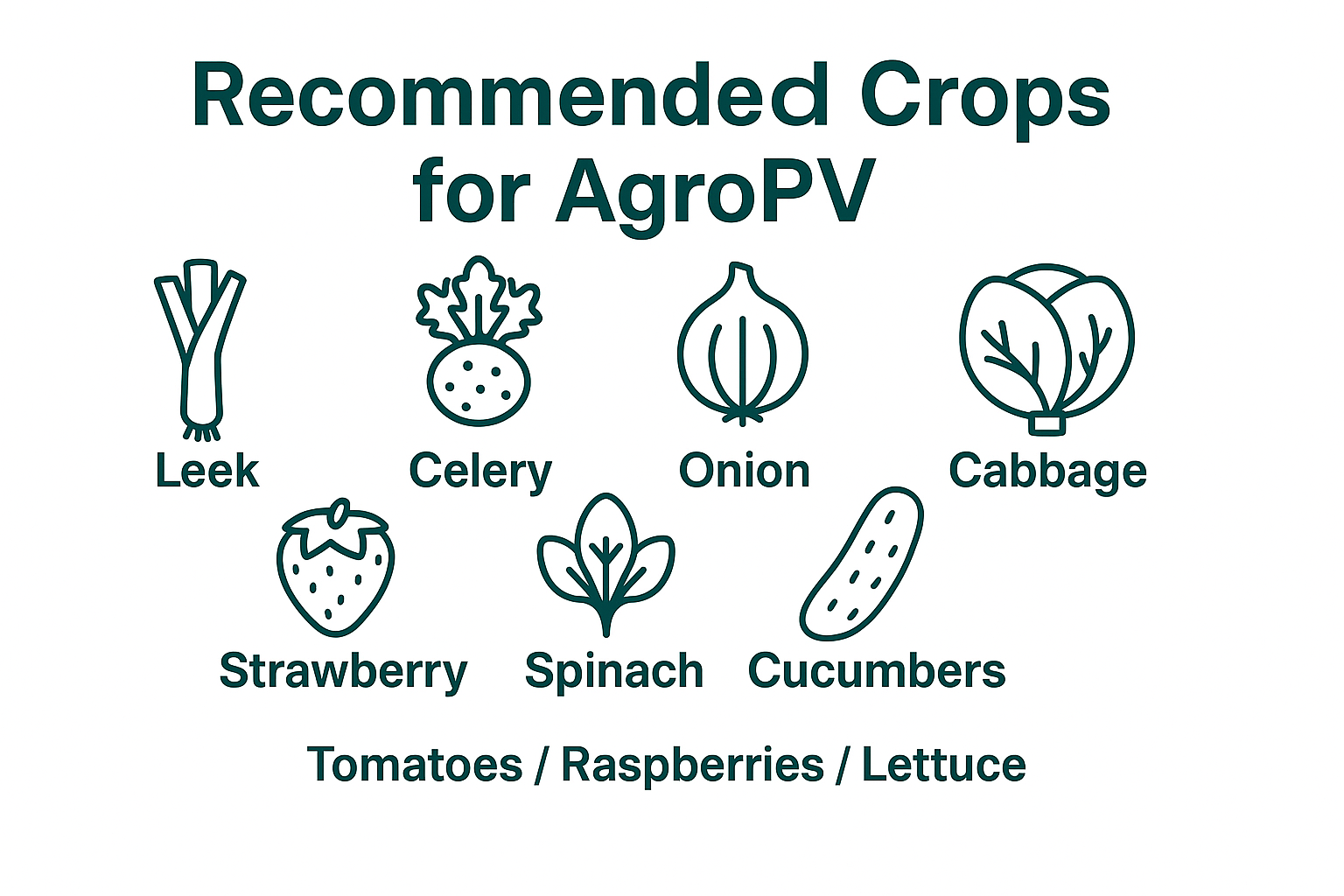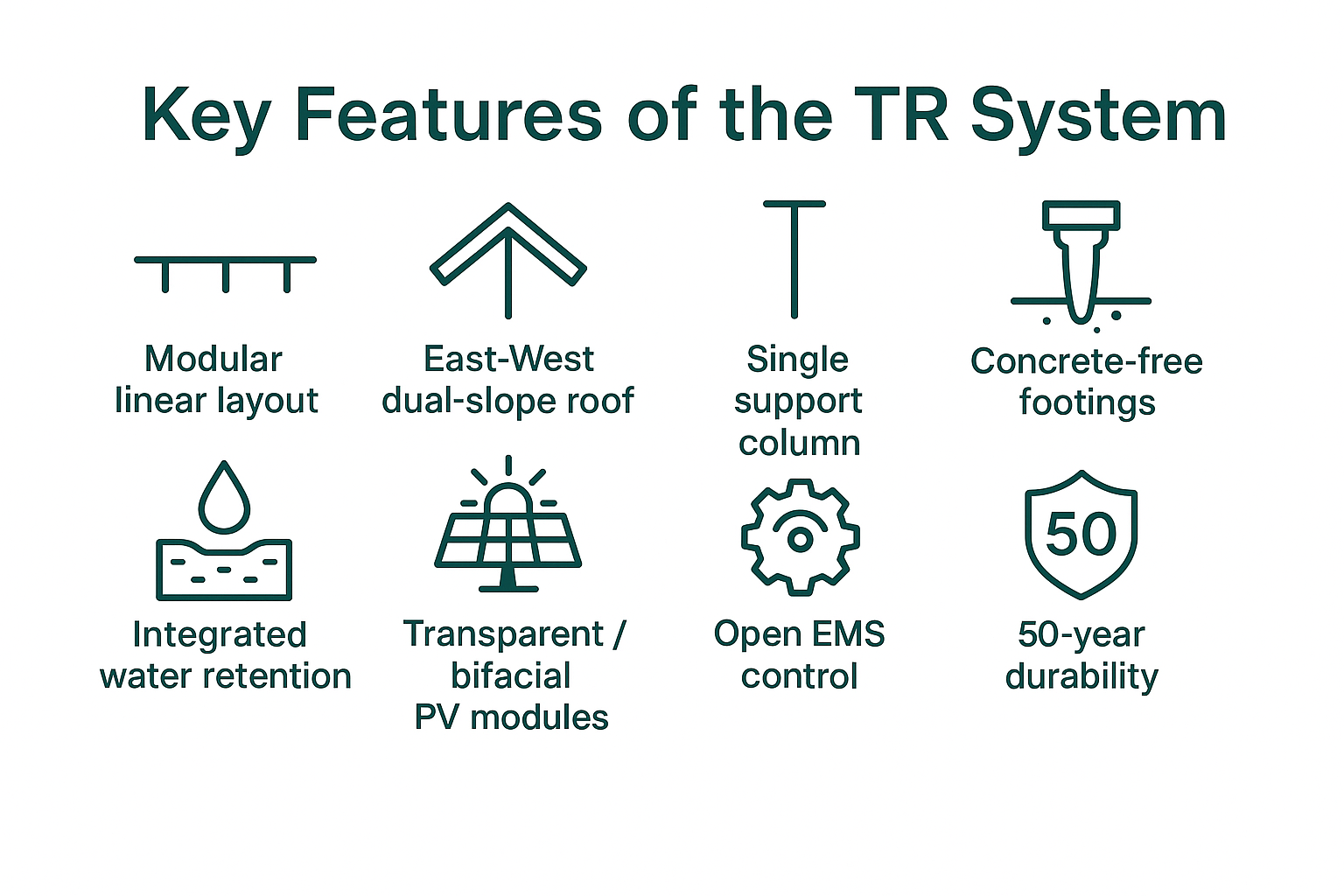The AgroPV TR System is a pilot solution developed under a project co-financed by the National Centre for Research and Development (NCBR). Its parameters may continue to be optimized as part of ongoing field research; depending on the results, further optimization and updates to the design assumptions will follow.
The project titled “Innovative technology for combined crop cultivation and electricity production using photovoltaic solutions” is funded from the state budget by the National Centre for Research and Development under the strategic program “New Technologies in the Field of Energy II.





